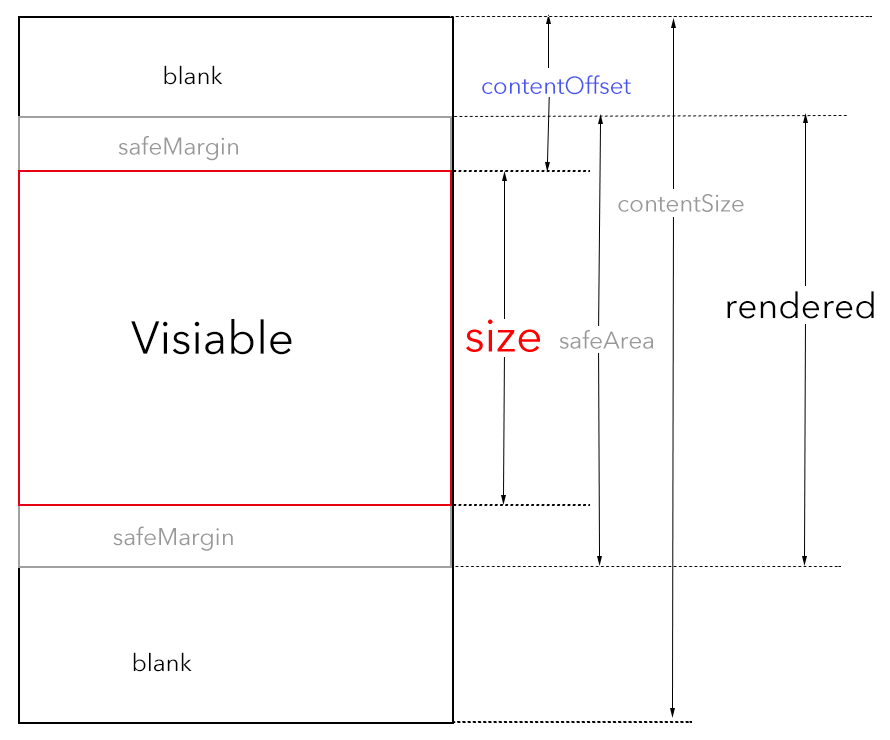中文文档请 点击这里
React-native-largelist is a high performance large list component for React-Native. It's performance is much better than SectionList.
react-native-largelist is a high performance list component for React Native(iOS & Android).
- react-native-largelist is better than SectionList
This is a react-native-largelist with 3000 cells
iOS:
- Make sure your project is react-native project.
- Using this command to install:
npm install react-native-largelist --save
- Using it like this:
import { LargeList } from "react-native-largelist";
//other code
...
<LargeList
style={{ flex: 1 }}
bounces={true}
refreshing={this.state.refreshing}
onRefresh={() => {
this.setState({ refreshing: true });
setTimeout(() => this.setState({ refreshing: false }), 2000);
}}
safeMargin={600}
numberOfRowsInSection={section => this.props.numberOfEachSection}
numberOfSections={this.props.numberOfSections}
heightForCell={(section, row) =>
row % 2 ? this.minCellHeight : this.maxCellHeight}
renderCell={this.renderItem.bind(this)}
heightForSection={section =>
section % 2 ? this.minSectionHeight : this.maxSectionHeight}
renderHeader={this.renderHeader.bind(this)}
renderFooter={this.renderFooter.bind(this)}
renderSection={section => {
return (
<View
style={{
flex: 1,
backgroundColor: section % 2 ? "grey" : "yellow",
justifyContent: "center",
alignItems: "center"
}}
>
<Text>
I am section {section}
</Text>
</View>
);
}}
/>
...
import { LargeList } from "react-native-largelist"
Props:
| Props | type | default | effect |
|---|---|---|---|
| (ViewPropTypes) | (ViewPropTypes) | All props of View | |
| numberOfSections | number | 1 | number of sections in tableview |
| numberOfRowsInSection | (section:number) => number | section=>0 | function:return the number of rows in section |
| renderCell | (section:number,row:number) => React.Element | required | function: render of cell with section and row index |
| heightForCell | (section:number,row:number) => number | required | function:return height for cell with section and row index |
| renderSection | (section:number) => React.Element | section=>null | function:render of section with section index |
| heightForSection | (section:number) => number | 0 | function:return height of section with section index |
| renderHeader | () => React.Element | null | function:render of header in the tableview |
| renderFooter | () => React.Element | null | function:render of footer in tableview |
| bounces | boolean | true | bounces |
| refreshing | boolean | true | refreshing |
| onRefresh | () => any | ()=>{} | callback of pulling to refresh |
| onScroll | ({nativeEvent:{contentOffset:{x:number,y:number}}})=> any | Callback when scrolling. |
Before we learn advanced usage, we must first understand the basic principles:
Every Cell/Item is reused just like UITableView/RecyclerView. The top Cell/Item which is Slided to the outside of the visible region does not need to show. So, I move it bottom, render it with the new datasource.
But,as you know, It is different with native UITableView/RecyclerView. They are not one thread between Main Thread(UI Thread) and JavaScript Thread. And They are synchronous, and the communication between them may take not a few time. So, I try to render more Cells/Items at the upper and lower ends of the visual area. I call it safeArea. And I use it to buffer, to avoid the user slide suddenly and the visual view of the upper and lower edges is flickering.
Look up the design of react-native-largelist:
The height of rendering children out side of visiable area. The greater the value is, the less easily you see the blank in the fast sliding process, but the longer the first time it is loaded
The height of dynamic safe margin when sliding too fast. For example, if safeMargin=600 and dynamicMargin=500, it will render 100 height on top and 1100 height on bottom out side of the visiable area when sliding down too fast.
Notice:
- It does not work when the speed of sliding is slow.
- It can not be set larger than safeMargin
It is the same as scrollEventThrottle on ScrollView
The callback when an indexpath did enter safeArea.
The callback when an indexpath did leave safeArea.
Scroll to offset.
Scroll to an indexpath.
Scroll to the end of the LargeList.
Get the visiable indexpaths at this time.
Get the rendered indexpaths at this time.
Get the count of free views at this time.
Current size of LargeList. Size:{width:number,height:number}
Current contentOffset of LargeList. Offset:{x:number,y:number}
Current safeArea of LargeList.. Range:{top:number,bottom:number}
Current topIndexPath of LargeList. IndexPath:{section:number,row:number}
Current bottomIndexPath of LargeList. IndexPath:{section:number,row:number}
Current contentSize of LargeList. Size:{width:number, height:number}
Current section index of LargeList.
Get LargeList's header height
Get LargeList's footer height

